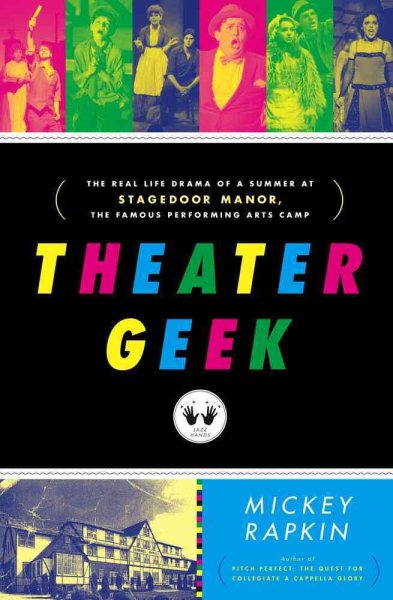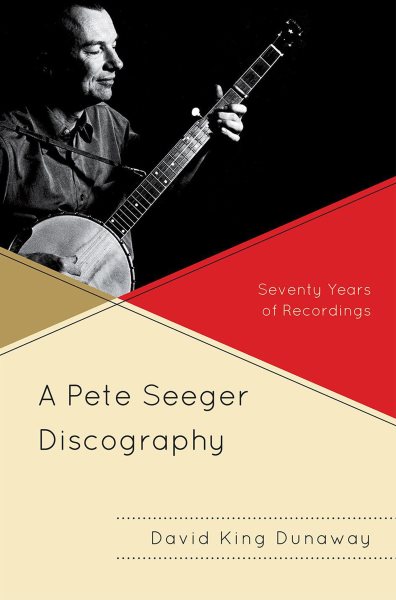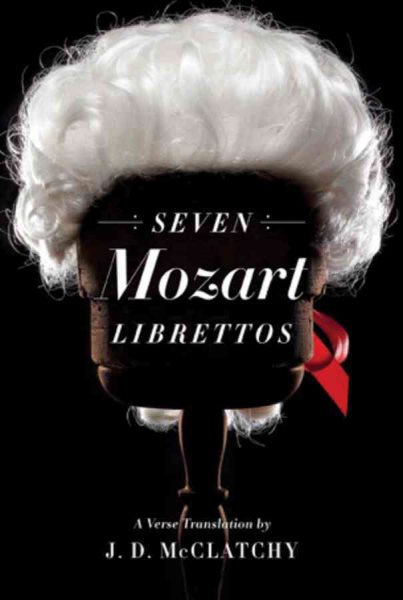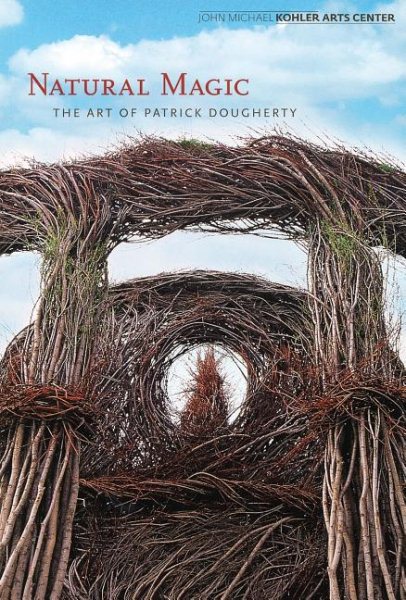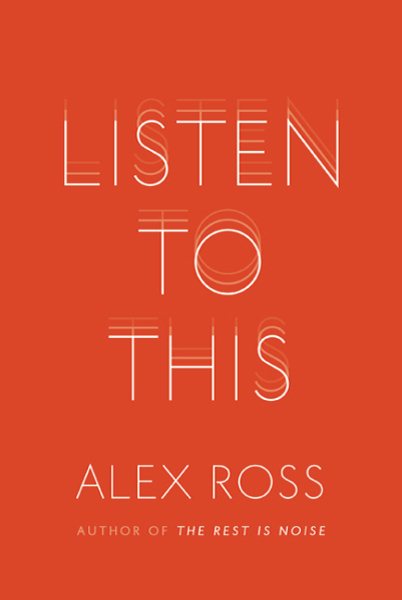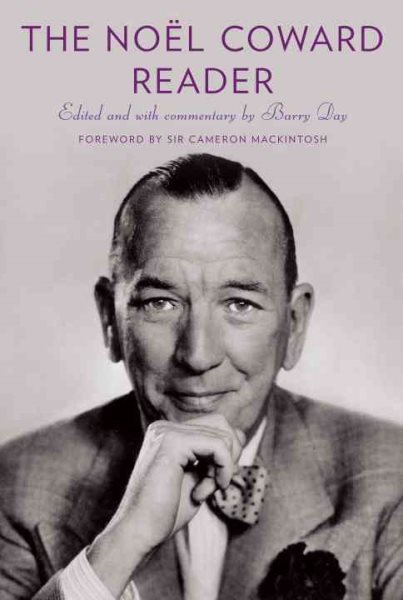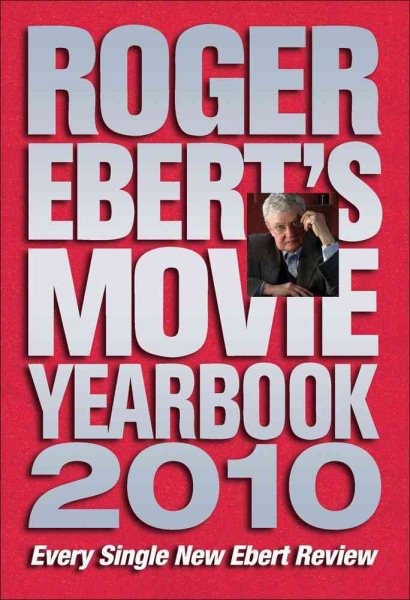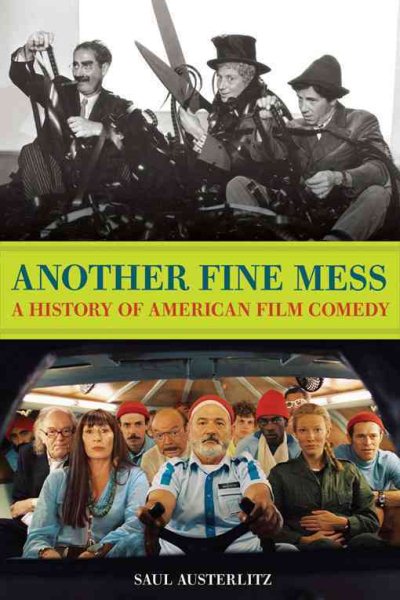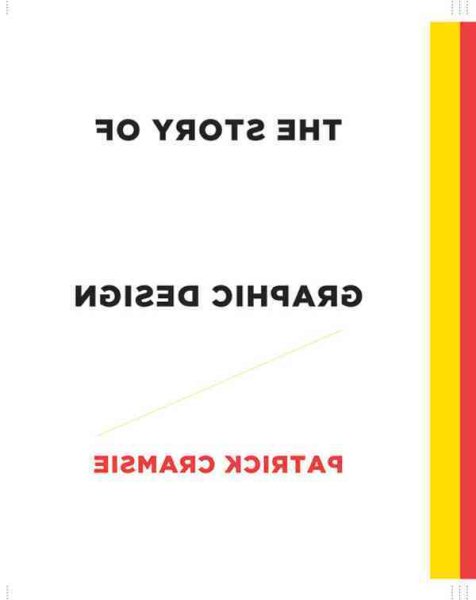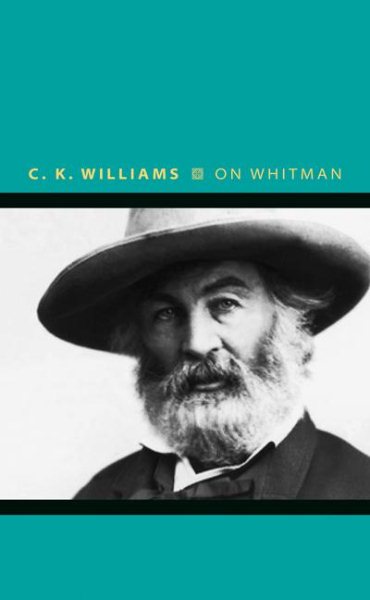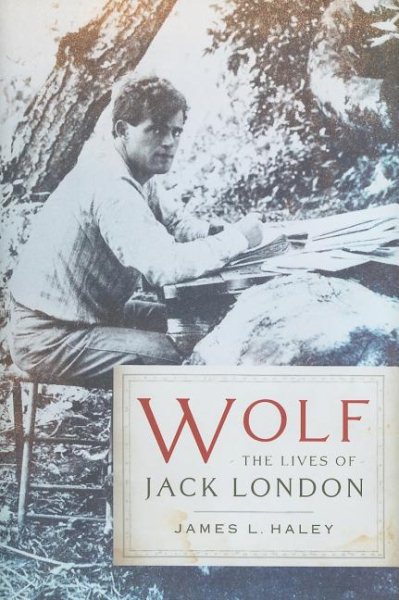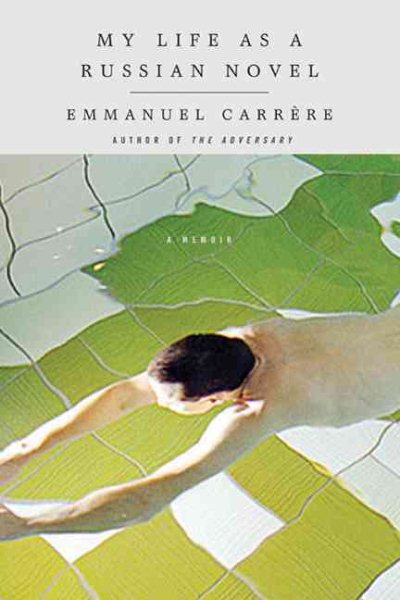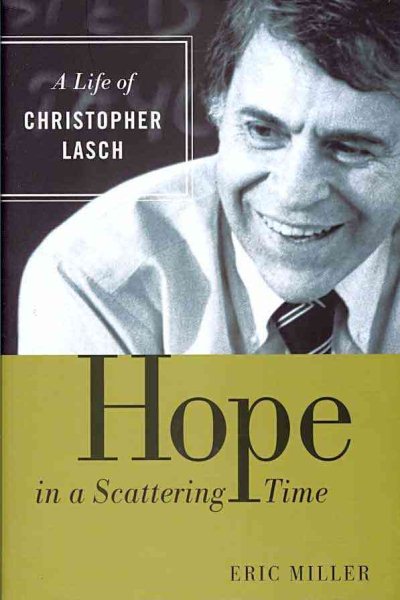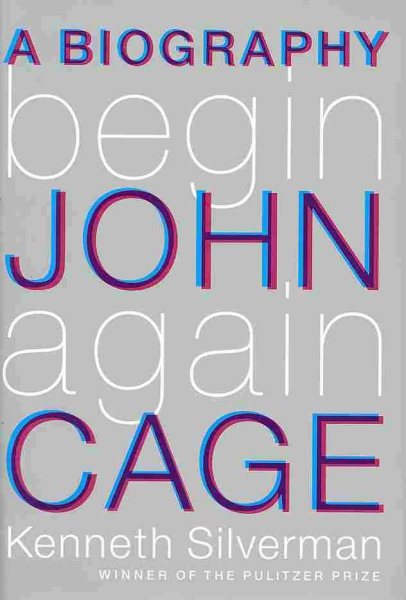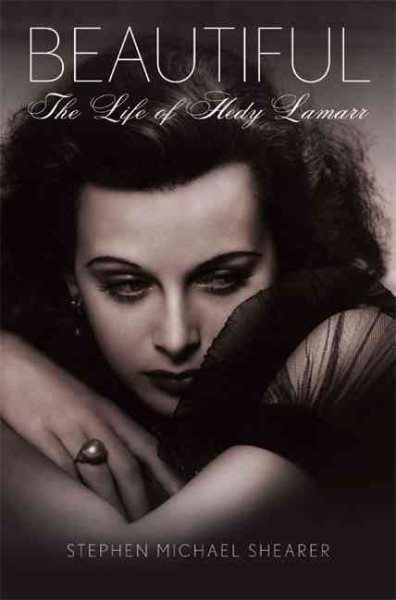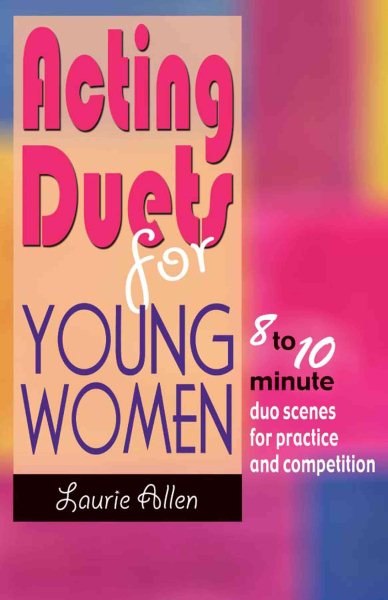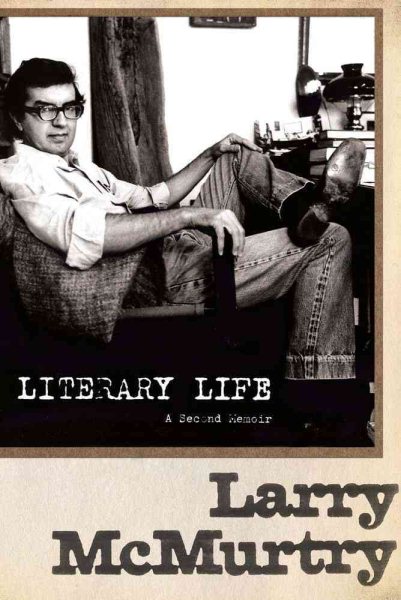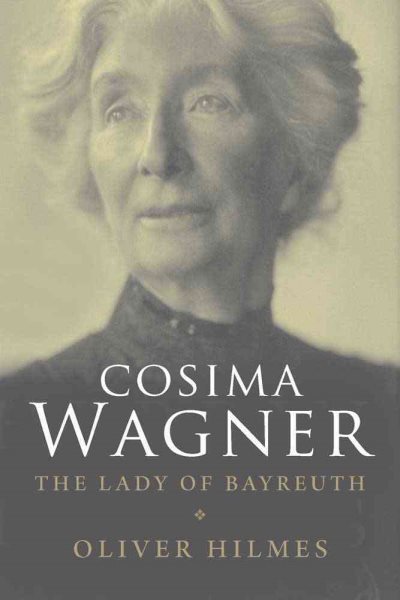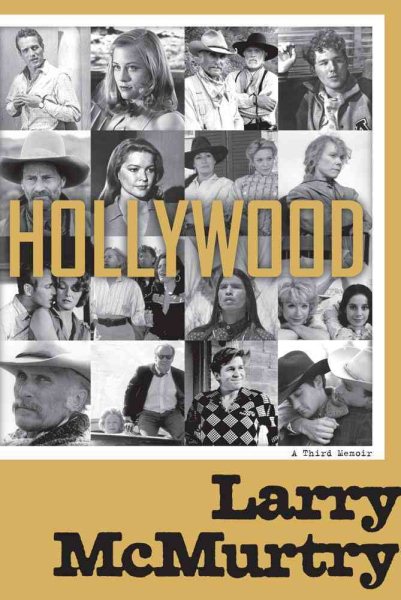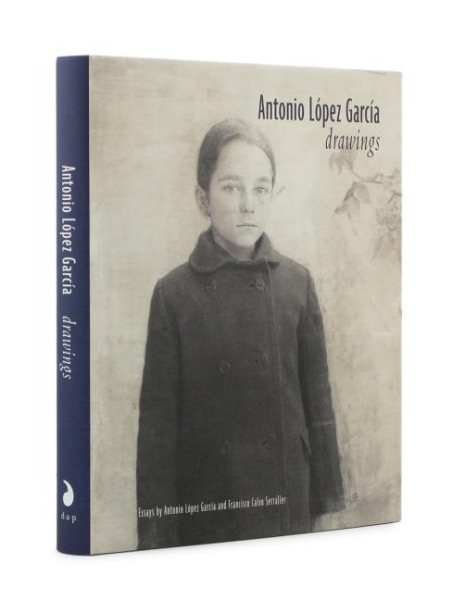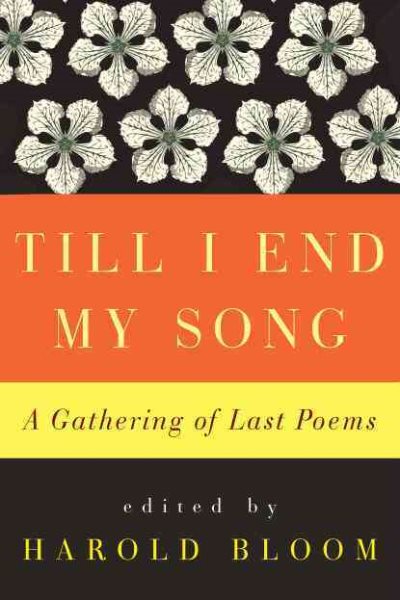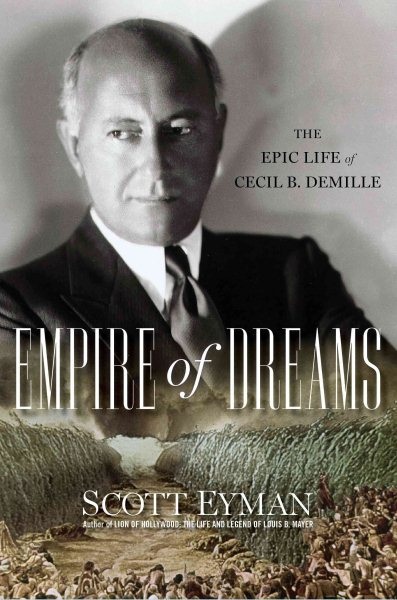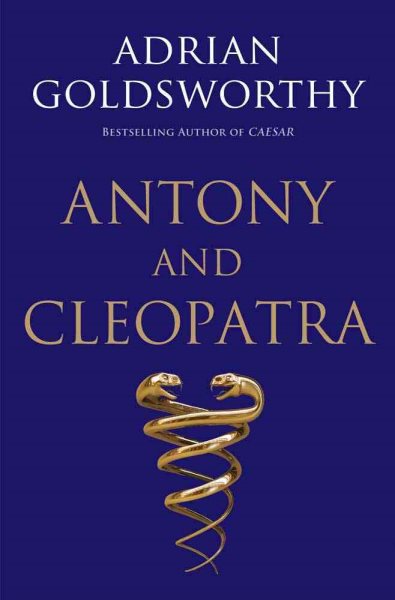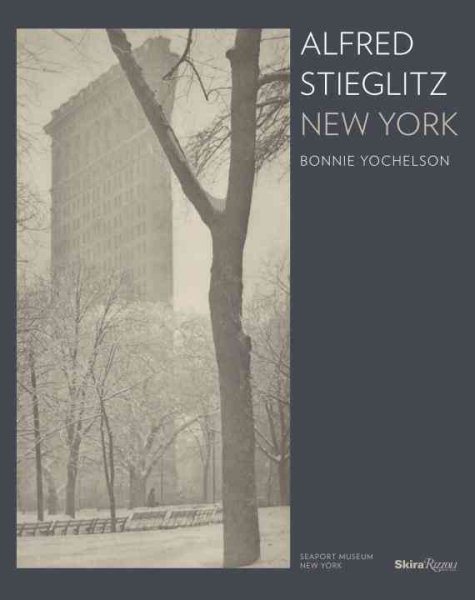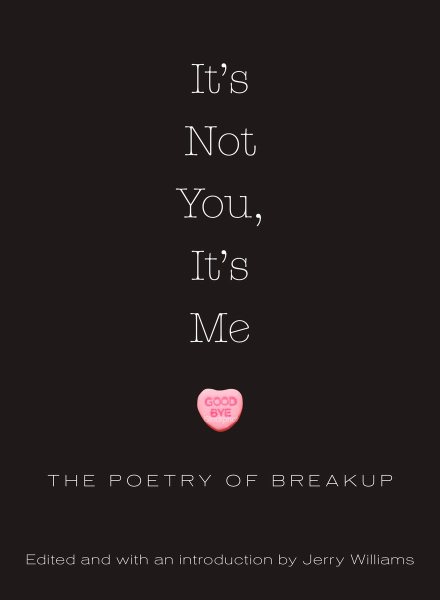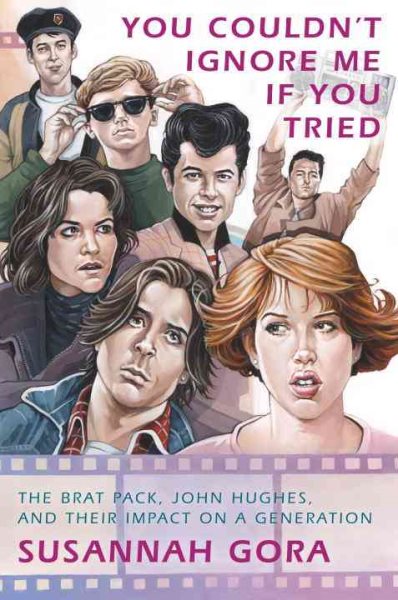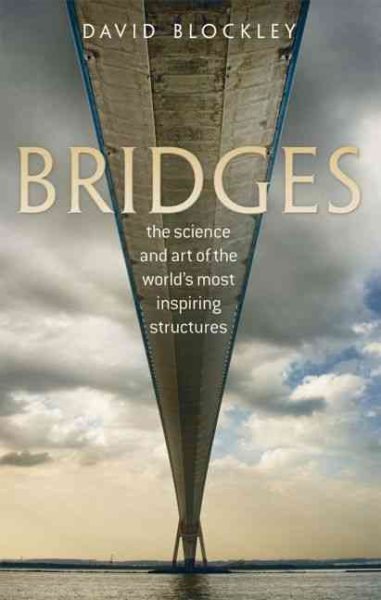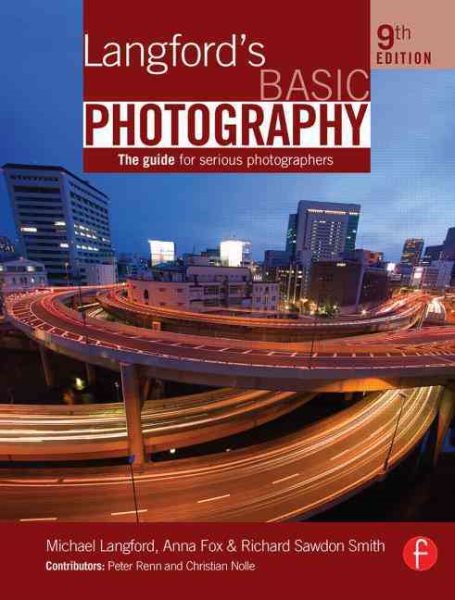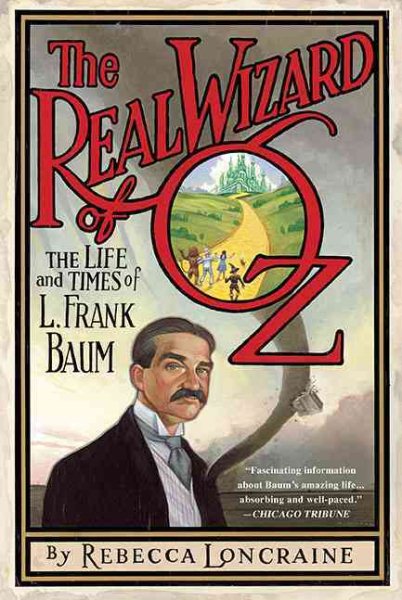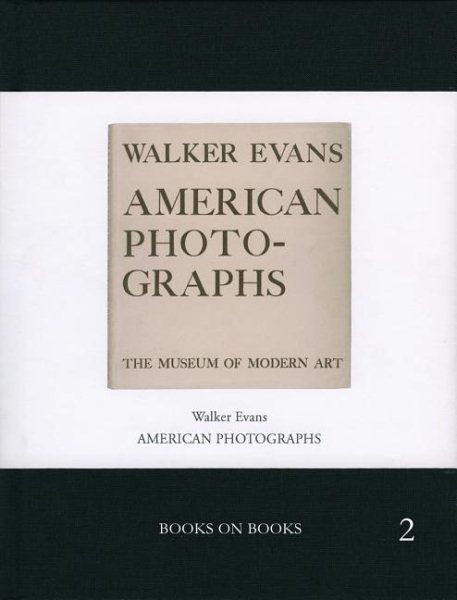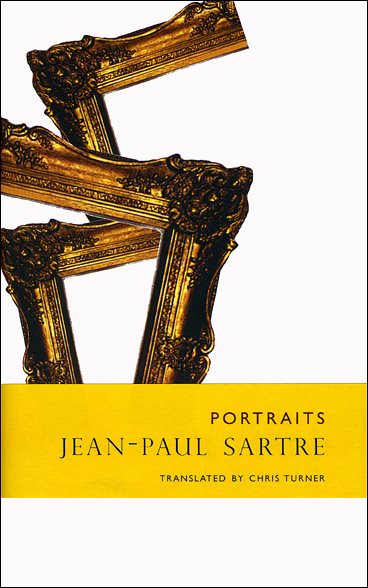"Stagedoor Manor is famous in the performing arts community for transforming young unknowns into the likes of Natalie Portman and Robert Downey, Jr., two previous participants. Rapkin, a senior editor at GQ, follows three campers as they rehearse for major roles in Sondheim shows and recounts the camp's storied history, complete with anecdotes of overly-dramatic directors and lax adult oversight fueled by sex and drugs (far more entertaining that any of the present-day shenanigans). Although Rapkin has obviously spoken frequently with each of his chosen subjects, he neither delves into their stories, nor questions the outlandish things they say. Indeed, one girl's rivalry with another veteran camper is presented with such gravity that it almost seems... important. Then the reader recalls that this was on a one-day production put on by teens in a Pennsylvania forest. Theatre is a powerful force, but Rapkin rarely explores beyond the proscenium. Instead, he embraces the relationship between Stagedoor and the industry with little question, leading one to wonder what the campers who didn't land the lead, or the agent, might have to say about all this." Publisher's Weekly
Request Theater Geek from the catalog.
Arts!
A selection of our new and noteworthy materials on the Performing Arts as well as other Fine Arts
Sunday, December 12, 2010
Thursday, December 9, 2010
Sheila Hicks: 50 Years
Sheila Hicks (born 1934) is a pioneering artist noted for objects and public commissions whose structures are built of color and fiber. This volume accompanies the first major retrospective of Hicks’s work; it documents the remarkable versatility and dramatically divergent scale of her textiles as well as her distinctive use, and surprising range, of materials. Hicks deliberately and provocatively engages what are often considered mutually exclusive domains, rethinking and pushing the limits of generally accepted contexts, conditions, and frameworks. These include distinct objects and temporal, performative actions; studio works and commissions for public buildings; and textiles made in artisanal workshops as well as for industrial production in places as different as Chile, France, Germany, India, Japan, Mexico, Morocco, Sweden, and the United States.
Exhibition dates : Addison Galley of American Art, Phillips Academy, Andover MA - Nov. 5, 2010 - Feb.27, 2011.
Request Sheila Hicks from the catalog.
A Pete Seeger Discography: Seventy Years of Recordings
Provides a comprehensive listing of the 45s, 78s, LPs and CDs recorded by folk performer Pete Seeger as a solo artist and with the Almanac Singers, the Weavers and with other musicians and contributors.
Request A Pete Seeger Discography from the catalog.
Request A Pete Seeger Discography from the catalog.
Seven Mozart Librettos: A Verse Translation
"Celebrated poet McClatchy has done an invaluable service for lovers of Mozart's operas. He has undertaken the gargantuan task of rendering into idiomatic, accurate, and lively poetic English the complete librettos of Mozart's seven mature operas: The Magic Flute, Idomeneo, The Abduction from the Seraglio, The Marriage of Figaro, Don Giovanni, Così Fan Tutte, and La Clemenza di Tito. There is a chapter dedicated to each opera, complete with an introductory essay and a detailed synopsis of the plot. The librettos are presented on facing pages to facilitate easy comparison, with the original language on the left and the new translation on the right. In a lengthy introduction, McClatchy explains the pleasures and pitfalls of creating translations that accurately convey the meaning while capturing the beauty and liveliness of the original language. He has succeeded admirably."Library Journal Reviews by Larry Lipkis.
Request Seven Mozart Librettos from the catalog.
Request Seven Mozart Librettos from the catalog.
Natural Magic: The Art of Patrick Dougherty
Natural Magic: the art of Patrick Dougherty documents from beginning to end the exhibitions, the collaborative process of creating major installations, and the eventual, natural demise of Dougherty's unique sculptures.
Natural Magic: the art of Patrick Dougherty from the catalog.
Natural Magic: the art of Patrick Dougherty from the catalog.
Tuesday, November 30, 2010
A Museum of One's Own: Private Collecting, Public Gift
"In this beautifully and generously illustrated publication (featuring more than 70 black-and-white and 130 color reproductions), Higonnet (chair, art history dept., Barnard Coll.) examines the origins and growth of collection museums that developed as wealthy Europeans and Americans acquired fine and decorative art objects for their oftentimes specially built homes. Arising during the late 19th and early 20th centuries, collection museums were reactions to the large, public survey museums like New York's Metropolitan Museum of Art. Although diverse, they were characterized by their founders' personal art collections and installations within domestic settings. Over the course of a decade of research, Higonnet studied letters, auction records, photographs, and other documents pertaining to renowned and obscure collection museums owned by Sir Richard Wallace, Duke of Aumale Henri d'Orléans, Isabella Stewart Gardner, Henry Clay Frick, Henry E. Huntington, Mildred and Robert Bliss, and others. Focusing on these six principal collection museums, Higonnet covers their many aspects, including common characteristics, collections, roles in history, founders' self-representations, and private-to-public features." Cheryl Ann Lajos, Free Lib. of Philadelphia.
Request A Museum of One's Own from the catalog.
Monday, November 22, 2010
Narrow Houses: New Directions in Efficient Design
Since the beginning of the housing boom of the 1950s, the size of the average North American house has steadily grown while the size of the average family has decreased. Today, a growing number of homebuyers seeking smaller, more efficient residential designs are rediscovering a centuries old housing prototype: the narrow house. Measuring twenty-five-feet wide or less, these "infill" or "skinny" houses, as they are often called, are on the rise in cities and suburbs around the world. The benefits of building small and narrow are numerous: greater land-use efficiency, less building material, fewer infrastructure costs, lower utility bills, and flexible layouts. This building type creates environmentally sensible houses that allow homeowners to live within their means. Narrow Houses presents a thorough overview of the practical considerations of designing a narrow-front home, including siting, floor arrangements, footprint, and interior and exterior finishing. The book documents twenty-eight innovative examples of narrow houses from around the world designed by today's foremost architects. Project data including floor plans and extensive interior and exterior photography demonstrate the inherent flexibility of this housing model and the many possibilities for adapting these homes to the constraints of site, climate, budget, family size, and other needs. (Hachette Book Group)
Request Narrow Houses from the catalog.
Request Narrow Houses from the catalog.
Saturday, November 13, 2010
The Next Stage Guitar Book - Learn How to Play Scale Patterns & Tabs Easily & Quickly
Welcome to The "Next Stage" Guitar Book! This guitar book contains a simple learning method that will help you master the skill of playing basic musical scales quickly and easily without having to learn anything about music theory if you don't want too. Most of the scales presented are Major Scales, the familiar Do-Re-Me-Fa-Sol-La-Ti-Do that most of us have heard since childhood. The last half of the book will introduce you to the Pentatonic Scales (Major & Minor) and everyone's favorite - "The Blues Scale". The mateial presented is designed so you will not be overwhelmed with more scales and information than you need to know at this early stage of your musical development.
The material will be presented in three parts; Part I will cover single octave Major Scales. Part II will expand on Part I to cover double octave Major Scales. Part III will introduce you to the Pentatonic and Blues Scale. Each new scale is presented along with an accompanying (1) "Scale Path" diagram, (2) "Standard Music Notation" and (3) "Tablature" for that particular scale. If you like, you may record the scales you are learning and play them back periodically to monitor your progress. You will discover that by playing and memorizing these scales, you are preparing yourself for more advance scales and musical concepts.
Knowledge is power, and once you unlock the "secret" to playing scales, you can create your own phrasings and melodic patterns. You will find much more than described above in this new guitar book! On another note, you might also want to get a copy of The "First Stage" Guitar Book - Learn How To Play Guitar Easily & Quickly!, you will find this book very helpful in learning guitar chords in clear, bold and easy to understand illustrations plus more. Also there is a handy quick reference chord chart that you might want to include in your "how to play guitar" reference case called The "First Stage" Guitar Chord Chart - Learn How To Play The Most Commonly Played Guitar Chords!
Check Catalog
The Billboard Book of Top 40 Hits
Beginning with Bill Haley & His Comets’ seminal “Rock Around the Clock” all the way up to Lady Gaga and her glammed-out “Poker face,” this updated and unparalleled resource contains the most complete chart information on every artist and song to hit Billboard’s Top 40 pop singles chart all the way back to 1955. Inside, you’ll find all of the biggest-selling, most-played hits for the past six decades. Each alphabetized artist entry includes biographical info, the date their single reached the Top 40, the song’s highest position, and the number of weeks on the charts, as well as the original record label and catalog number. Other sections—such as “Record Holders,” “Top Artists by Decade,” and “#1 Singles 1955-2009”—make The Billboard Book of Top 40 Hits the handiest and most indispensable music reference for record collectors, trivia enthusiasts, industry professionals and pop music fans alike.
Did you know?
• Beyonce’s 2003 hit “Crazy in Love” spent 24 weeks in the Top 40 and eight of them in the #1 spot.
• Billy Idol has had a total of nine Top 40 hits over his career, the last being “Cradle of Love” in 1990.
• Of Madonna’s twelve #1 hits, her 1994 single “Take a Bow” held the spot the longest, for seven weeks—one week longer than her 1984 smash “Like a Virgin.”
• Marvin Gaye’s song “Sexual Healing” spent 15 weeks at #3 in 1982, while the same song was #1 on the R&B chart for 10 weeks.
• Male vocal group Boyz II Men had three of the biggest chart hits of all time during the 1990s.
• The Grateful Dead finally enjoyed a Top 10 single in 1987 after 20 years of touring.
• Janet Jackson has scored an impressive 39 Top 40 hits—one more than her megastar brother Michael!
Beginning with Bill Haley & His Comets’ seminal “Rock Around the Clock” all the way up to Lady Gaga and her glammed-out “Poker face,” this updated and unparalleled resource contains the most complete chart information on every artist and song to hit Billboard’s Top 40 pop singles chart all the way back to 1955. Inside, you’ll find all of the biggest-selling, most-played hits for the past six decades. Each alphabetized artist entry includes biographical info, the date their single reached the Top 40, the song’s highest position, and the number of weeks on the charts, as well as the original record label and catalog number. Other sections—such as “Record Holders,” “Top Artists by Decade,” and “#1 Singles 1955-2009”—make The Billboard Book of Top 40 Hits the handiest and most indispensable music reference for record collectors, trivia enthusiasts, industry professionals and pop music fans alike.
Did you know?
• Beyonce’s 2003 hit “Crazy in Love” spent 24 weeks in the Top 40 and eight of them in the #1 spot.
• Billy Idol has had a total of nine Top 40 hits over his career, the last being “Cradle of Love” in 1990.
• Of Madonna’s twelve #1 hits, her 1994 single “Take a Bow” held the spot the longest, for seven weeks—one week longer than her 1984 smash “Like a Virgin.”
• Marvin Gaye’s song “Sexual Healing” spent 15 weeks at #3 in 1982, while the same song was #1 on the R&B chart for 10 weeks.
• Male vocal group Boyz II Men had three of the biggest chart hits of all time during the 1990s.
• The Grateful Dead finally enjoyed a Top 10 single in 1987 after 20 years of touring.
• Janet Jackson has scored an impressive 39 Top 40 hits—one more than her megastar brother Michael!
Check Catalog
Listen to This
A collection of the author's best "New Yorker" essays on music covers everything from classical music to the top pop hits and includes a previously unpublished essay that retells hundreds of years of music history, from the Renaissance to Led Zeppelin, through a few iconic bass lines.
Check Catalog
The Noel Coward Reader
Noel Coward said, "The only thing that really saddens me over my demise is that I shall not be here to read the nonsense that will be written about me and my works and my motives ... There will be lists of apocryphal jokes I never made and gleeful misquotations of words I never said. What a pity I shan't be here to enjoy them!"
Here is a book that Noel Coward did write; jokes he did make . . . No gleeful misquotations here . . . only the best of Coward's best.
Barry Day, editor of the acclaimed Letters of Noel Coward, who knows more about Coward and his writing than almost anyone, has brought together in one volume a Coward reader any Coward reader---or Coward appreciator---will delight in.
It's hard to believe that, to date, there has never been a Noel Coward reader; this volume is the very first.
Here are scenes from Coward's plays, The Vortex, Blithe Spirit, Private Lives, and Design for Living. . . from his film screenplays, Brief Encounter and the previously unpublished script for In Which We Serve . . . from his only published novel, Pomp and Circumstance, as well as four of his best short stories.
Included, as well, is his verse, in which Coward reveals the "secret heart" behind the surface wit of his more formal work ...
And here, too, are the lyrics of his sublimely Coward songs: "Mad Dogs and Englishmen" . . . "The Stately Homes of England" . . . "I'll See You Again" . . . "Someday I'll Find You" . . . "Mad About the Boy" . . . "Sail Away" . . . "Mrs. Worthington" . . . and much more that embodies what Coward hoped would be his epitaph: "He was much loved, because he made people laugh and cry."
Eddie Cantor said Noel Coward was "the British George M. Cohan . . . The most brilliant contribution England ever made to American show business."
The Noel Coward Reader is a must-have book for those who luxuriated in the collection of his letters; for those who adore his work and those who are just discovering the delights of his writing.
Kenneth Tynan said of Coward, "Theatrically speaking, it was Coward who took sophistication out of the refrigerator and put it on the hob . . . Even the youngest of us will know, in fifty years' time, precisely what is meant by `a very Noel Coward sort of person.'"
Those who read The Noel Coward Reader will agree: this is a very Noel Coward sort of book.
Random House, Inc.: A sublime Noël Coward reader—the first ever—that brings together the best of his short stories, verse, songs, plays, novels, and screenplays; from the editor of the acclaimed Letters of Noël Coward.
check Cataloghttp://ipac.uhls.org/ipac20/ipac.jsp?session=12896L4N6Q746.202220&profile=coln&uri=link=3100013~!2138275~!3100001~!3100002&aspect=basic&menu=search&ri=1&source=~!clone&term=0307273377&index=ISBN
Roger Ebert's Movie Yearbook 2010
Roger Ebert's Movie Yearbook 2010 is the ultimate source for movies, movie reviews, and much more. For nearly 25 years, Roger Ebert's annual collection has been recognized as the preeminent source for full-length critical movie reviews, and his 2010 yearbook does not disappoint.
The yearbook includes every review Ebert has written from January 2007 to July 2009. It also includes interviews, essays, tributes, and all-new questions and answers from his Questions for the Movie Answer Man columns. Fans get a bonus feature, too, with new entries to Ebert's Little Movie Glossary.
This is the must-have go-to guide for movie fanatics.
Check Catalog
Another Fine Mess: A History of American Film Comedy
By Saul Austerlitz
Austerlitz asserts that comedy has been underappreciated as a cinematic genre by critics and historians, and that this has resulted in underrepresentation in Academy Awards presentations and nominations. To redress this inequity, Austerlitz presents more than 100 biographical sketches of top comedy talents from Charlie Chaplin to Judd Apatow, augmented by shorter tidbits regarding lesser players. So the Jim Carrey saga coexists with the legend of Harold Lloyd, and the debonair comic stylings of Cary Grant contrast nicely with those of Will Ferrell. As the title would indicate, Laurel and Hardy are limned, as are Buster Keaton, W. C. Fields, Mae West, and the Marx Brothers. Katharine Hepburn, Marilyn Monroe, and Doris Day are the only other women accorded full chapters, but Myrna Loy, Carole Lombard, and Tina Fey, among others, garner tidbit status. More recent comic masters featured include Ben Stiller, the Coen Brothers, and Steve Martin. With broad coverage like this, the book has some reference applications, though most of the pieces are unfailingly upbeat. Even tragic death is fraught with dreamy potential: regarding Jean Harlow's death at 26, Austerlitz muses, "What might Preston Sturges have made of her had she lived?" Entertaining reading.
Check Catalog
Austerlitz asserts that comedy has been underappreciated as a cinematic genre by critics and historians, and that this has resulted in underrepresentation in Academy Awards presentations and nominations. To redress this inequity, Austerlitz presents more than 100 biographical sketches of top comedy talents from Charlie Chaplin to Judd Apatow, augmented by shorter tidbits regarding lesser players. So the Jim Carrey saga coexists with the legend of Harold Lloyd, and the debonair comic stylings of Cary Grant contrast nicely with those of Will Ferrell. As the title would indicate, Laurel and Hardy are limned, as are Buster Keaton, W. C. Fields, Mae West, and the Marx Brothers. Katharine Hepburn, Marilyn Monroe, and Doris Day are the only other women accorded full chapters, but Myrna Loy, Carole Lombard, and Tina Fey, among others, garner tidbit status. More recent comic masters featured include Ben Stiller, the Coen Brothers, and Steve Martin. With broad coverage like this, the book has some reference applications, though most of the pieces are unfailingly upbeat. Even tragic death is fraught with dreamy potential: regarding Jean Harlow's death at 26, Austerlitz muses, "What might Preston Sturges have made of her had she lived?" Entertaining reading.
Check Catalog
The Cult of Celebrity: What Our Fascination With the Stars Reveals About Us
By Cooper Lawrence
The Cult of Celebrity is the first book to explore this phenomenon comprehensively and yet in eminently readable terms. In a compulsive read, Cooper Lawrence maps out the psychology behind the behavior of the stars—and that of the millions out there who follow their every move. She points both to the benefits and dangers not only to society but also to us personally; to our spending habits, health, social awareness, attitude toward personal failure and toward relationships, and above all, our self-image. And she offers practical tips on keeping our interest under control. Drawing on the latest research as well as interviews with fans and entertainment industry insiders, as well as celebrities themselves, The Cult of Celebrity is as accessible and sassy as it is thought-provoking.
Check Catalog
America’s fast-growing religion is—let’s face it—celebrity worship. From gossip magazines to entertainment TV, from blogs to ads featuring famous faces, the stars are our new gods and goddesses. But why are we so quick to put them on pedestals? Why are we even more spellbound when they topple back down to earth?
The Cult of Celebrity is the first book to explore this phenomenon comprehensively and yet in eminently readable terms. In a compulsive read, Cooper Lawrence maps out the psychology behind the behavior of the stars—and that of the millions out there who follow their every move. She points both to the benefits and dangers not only to society but also to us personally; to our spending habits, health, social awareness, attitude toward personal failure and toward relationships, and above all, our self-image. And she offers practical tips on keeping our interest under control. Drawing on the latest research as well as interviews with fans and entertainment industry insiders, as well as celebrities themselves, The Cult of Celebrity is as accessible and sassy as it is thought-provoking.
Check Catalog
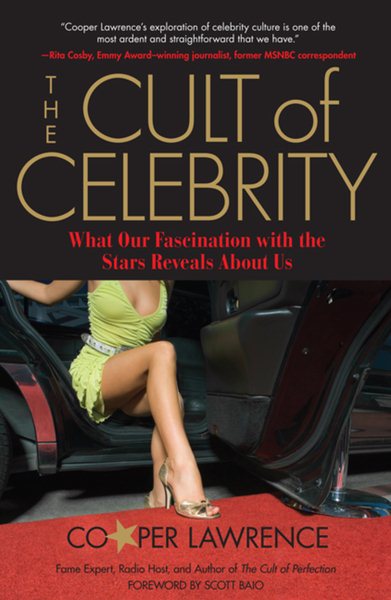
Monday, November 8, 2010
The Story of Graphic Design: From the Invention of Writing to the Birth of Digital Design
his book is an important addition to the increasingly diverse literature on the historical practice of graphic design. It is one of the few design histories to deliver a serious survey of the entire history of visual mass communication. Beginning with the development of writing systems, it goes into increasing detail as the account moves toward the 20th century. The last half of the book appropriately concentrates on the past 100 years, when design became defined as an independent discipline. The illustrations are extremely well chosen, the text eminently readable, and the insights plentiful. Graphic designer Cramsie does a superb job of walking the tightrope between condensation and comprehensiveness. This reviewer would readily recommend this book as a text in undergraduate graphic design history courses, even over the standard for such courses, Meggs' History of Graphic Design (4th ed., 2006), by P. B. Meggs and A. W. Purvis. For a compelling and truly comprehensive story of graphic design, this is the book against which others will be measured. Summing Up: Essential. All levels. Copyright 2010 American Library Association. Request The Story of Graphic Design from the catalog.
Saturday, October 30, 2010
On Whitman
By Charles Kenneth Williams
This jewel of a book, by one poet on another in the Writers on Writers series, does nothing less than show that Walt Whitman is the very unconscious and Paraclete of all American poets working today. With generous quotes from Williams's hero, we see how Whitman's oracular largesse most certainly extended to the continental-inspired Pound and Eliot. Williams returns to the pure, original edition (out of nine) of Leaves of Grass for inspiration, finding the so-called deathbed edition along with all the Leaves in between lacking the first flush of musical and formal elements. Williams likewise always returns to Leaves to explore what inspires: beyond Dante, Shakespeare, and others who attract him. In "Song of Myself," the "I" and "you," author and experiencer, are conflated to the point where the writer is one more of his own readers; "Song of Myself" tellingly ends with the word "you." As Williams observes, Whitman "wants us not to be afraid of ourselves, even of our dark, darkest, most doubting selves." As a personal introduction to the visionary free-verse wellspring of the American poetic spirit, this book is one that no poetry lover should miss.
Check Catalog
This jewel of a book, by one poet on another in the Writers on Writers series, does nothing less than show that Walt Whitman is the very unconscious and Paraclete of all American poets working today. With generous quotes from Williams's hero, we see how Whitman's oracular largesse most certainly extended to the continental-inspired Pound and Eliot. Williams returns to the pure, original edition (out of nine) of Leaves of Grass for inspiration, finding the so-called deathbed edition along with all the Leaves in between lacking the first flush of musical and formal elements. Williams likewise always returns to Leaves to explore what inspires: beyond Dante, Shakespeare, and others who attract him. In "Song of Myself," the "I" and "you," author and experiencer, are conflated to the point where the writer is one more of his own readers; "Song of Myself" tellingly ends with the word "you." As Williams observes, Whitman "wants us not to be afraid of ourselves, even of our dark, darkest, most doubting selves." As a personal introduction to the visionary free-verse wellspring of the American poetic spirit, this book is one that no poetry lover should miss.
Check Catalog
Hi-De-Ho: The Life of Cab Calloway
By Alyn Shipton
Jazz critic Shipton follows his biography of Dizzy Gillespie (Groovin' High) and his extensive A New History of Jazz with the first full-length biography of the iconic originator of "Minnie the Moocher." At the height of his popularity in the Thirties, vocalist-bandleader Cab Calloway was the most popular and most highly compensated African American entertainer in the country. His scat vocals influenced American music from Louis Jordan to Tupac Shakur, and his stage costumes defined fashion for a generation of hipsters around the world. Shipton presents in admirable detail Calloway's professional apex as Cotton Club headliner and leader of the foremost big band in the United States and reveals him as a superior artistic tactician. He also offers critical reconsiderations of Calloway's vocal and instrumental recordings, making a strong case for his inclusion as a musical innovator in the class of Louis Armstrong or Duke Ellington.
Check Catalog
Jazz critic Shipton follows his biography of Dizzy Gillespie (Groovin' High) and his extensive A New History of Jazz with the first full-length biography of the iconic originator of "Minnie the Moocher." At the height of his popularity in the Thirties, vocalist-bandleader Cab Calloway was the most popular and most highly compensated African American entertainer in the country. His scat vocals influenced American music from Louis Jordan to Tupac Shakur, and his stage costumes defined fashion for a generation of hipsters around the world. Shipton presents in admirable detail Calloway's professional apex as Cotton Club headliner and leader of the foremost big band in the United States and reveals him as a superior artistic tactician. He also offers critical reconsiderations of Calloway's vocal and instrumental recordings, making a strong case for his inclusion as a musical innovator in the class of Louis Armstrong or Duke Ellington.
Check Catalog
Wolf: The Lives of Jack London
By James L. Haley
"I have drifted all my life, curiosity, that burning desire to know." In the intensely curious drifter who penned these words, Haley recognizes one of the most unlikely yet compelling novelists of the twentieth century. Lacing his biographical narrative with acute insights, Haley recounts how the flame of curiosity was first kindled in the son of an impoverished spiritualist medium, particularly chronicling the young Jack London's voracious boyhood reading of Melville, Kipling, and Flaubert. But only after his restless curiosity has schooled him in the harsh world outside of books: the world of panhandling, oyster-pirating, and prospecting, does London find his vocation in distilling the brutalities of life into the epiphanies of art. Careful research illuminates the creative process through which London forged such powerful works as Call of the Wild, White Fang, and The Game. But alongside London's curiosity-driven imaginative artistry, Haley traces a parallel strain of conviction-fired social activism, evident in works such as War of the Classes. Not all readers will share Haley's admiration for an idealist intent on revolutionizing society, while himself keeping a valet and habitually mistreating his wife. But any reader who shares even a spark of London's incandescent curiosity will relish this vivid portrait.
Check Catalog
"I have drifted all my life, curiosity, that burning desire to know." In the intensely curious drifter who penned these words, Haley recognizes one of the most unlikely yet compelling novelists of the twentieth century. Lacing his biographical narrative with acute insights, Haley recounts how the flame of curiosity was first kindled in the son of an impoverished spiritualist medium, particularly chronicling the young Jack London's voracious boyhood reading of Melville, Kipling, and Flaubert. But only after his restless curiosity has schooled him in the harsh world outside of books: the world of panhandling, oyster-pirating, and prospecting, does London find his vocation in distilling the brutalities of life into the epiphanies of art. Careful research illuminates the creative process through which London forged such powerful works as Call of the Wild, White Fang, and The Game. But alongside London's curiosity-driven imaginative artistry, Haley traces a parallel strain of conviction-fired social activism, evident in works such as War of the Classes. Not all readers will share Haley's admiration for an idealist intent on revolutionizing society, while himself keeping a valet and habitually mistreating his wife. But any reader who shares even a spark of London's incandescent curiosity will relish this vivid portrait.
Check Catalog
My Life As a Russian Novel: A Memoir
By Emmanuel Carrere
French novelist/screenwriter/journalist Carrère (I Am Alive and You Are Dead: A Journey Inside the Mind of Philip K. Dick, 2003, etc.) recalls two fraught years that took him to Siberia and ended a love affair.
Heavy drinking, infidelity, questions about meaning and identity, white nights in the long northern summer—it's a Russian novel in subject matter, but the author's approach is decidedly French: minute analysis of each emotional up or down, brutal frankness about his (and others') less-than-admirable behavior that recalls Flaubert or Stendhal. In 2000, Carrère traveled with a film crew to the provincial town of Kotelnich for a news story that later turned into an open-ended project for the French National Film Commission. Since he had no real plan for the project, he mostly hung around aimlessly with the locals—experiences that are sharply described in the memoir's least solipsistic scenes—while obsessing over two loose ends in his life. The first was the fate of his grandfather, a Russian immigrant to France who disappeared in 1944, presumably killed in reprisal for collaborating with the Germans. Carrère's mother, a distinguished French intellectual, begged her son not to write about her shameful father. Believing that she "denied us the right to our suffering," he did it anyway. This would be less distasteful if the author's motives didn't seem to be entirely selfish, which is the impression also created by his account of his tortured relationship with Sophie, the second loose end. The couple had great sex, but everything Carrère writes—including a semi-pornographic story he published in Le Monde, instructing his lover to read it on a train ride and follow its instructions—backs up Sophie's anguished belief that he was uninterested in her job, her friends and her life, embarrassed by her lower social status and intent on controlling her every move. She had an affair, became pregnant and eventually married another man. Readers will most likely conclude that Carrère deserved Sophie's payback.
Check Catalog
French novelist/screenwriter/journalist Carrère (I Am Alive and You Are Dead: A Journey Inside the Mind of Philip K. Dick, 2003, etc.) recalls two fraught years that took him to Siberia and ended a love affair.
Heavy drinking, infidelity, questions about meaning and identity, white nights in the long northern summer—it's a Russian novel in subject matter, but the author's approach is decidedly French: minute analysis of each emotional up or down, brutal frankness about his (and others') less-than-admirable behavior that recalls Flaubert or Stendhal. In 2000, Carrère traveled with a film crew to the provincial town of Kotelnich for a news story that later turned into an open-ended project for the French National Film Commission. Since he had no real plan for the project, he mostly hung around aimlessly with the locals—experiences that are sharply described in the memoir's least solipsistic scenes—while obsessing over two loose ends in his life. The first was the fate of his grandfather, a Russian immigrant to France who disappeared in 1944, presumably killed in reprisal for collaborating with the Germans. Carrère's mother, a distinguished French intellectual, begged her son not to write about her shameful father. Believing that she "denied us the right to our suffering," he did it anyway. This would be less distasteful if the author's motives didn't seem to be entirely selfish, which is the impression also created by his account of his tortured relationship with Sophie, the second loose end. The couple had great sex, but everything Carrère writes—including a semi-pornographic story he published in Le Monde, instructing his lover to read it on a train ride and follow its instructions—backs up Sophie's anguished belief that he was uninterested in her job, her friends and her life, embarrassed by her lower social status and intent on controlling her every move. She had an affair, became pregnant and eventually married another man. Readers will most likely conclude that Carrère deserved Sophie's payback.
Check Catalog
Hope in a Scattering Time: A Life of Christopher Lasch
By Eric Miller
An intellectual biography is rare on book shelves today. You find memoirs of Chelsea Handler and quickly written pop biographies of whoever is president at the time. Every once in a while, you come across an intellectual biography. It is not written like your "normal" biography; instead it is a biography of ideas, more specifically the ideas of the person whom the author is writing about. That is what Eric Miller has done for the social critic and historian Christopher Lasch. Miller is less concerned with the daily life of Christopher Lasch; instead he explores the ideas and works of Lasch. From his groundbreaking Narcissism to his final magnum opus Revolt of the Elites, we get an in-depth and close-up view of this monumental thinker. Shunned by the left, and embraced by the right (whom he ignored), he was a lonely scholar using history as a guide to critique modern America. This is a wonderfully written biography, and one that is not for the faint of heart. Many people might get lost in the authors argument; but it is well worth the read.
Check Catalog
An intellectual biography is rare on book shelves today. You find memoirs of Chelsea Handler and quickly written pop biographies of whoever is president at the time. Every once in a while, you come across an intellectual biography. It is not written like your "normal" biography; instead it is a biography of ideas, more specifically the ideas of the person whom the author is writing about. That is what Eric Miller has done for the social critic and historian Christopher Lasch. Miller is less concerned with the daily life of Christopher Lasch; instead he explores the ideas and works of Lasch. From his groundbreaking Narcissism to his final magnum opus Revolt of the Elites, we get an in-depth and close-up view of this monumental thinker. Shunned by the left, and embraced by the right (whom he ignored), he was a lonely scholar using history as a guide to critique modern America. This is a wonderfully written biography, and one that is not for the faint of heart. Many people might get lost in the authors argument; but it is well worth the read.
Check Catalog
Begin Again: A Biography of John Cage
By Kenneth Silverman
| ||||||
| Check Catalog |
Beautiful: The Life of Hedy Lamarr
By Stephen Michael Shearer
Shearer's biography does not simply chronicle the life of Hollywood legend Hedy Lamarr, from her cosseted childhood in an assimilated Jewish family in Austria to her early breaks in Max Reinhardt's internationally famous theater company; her scandalous, career-launching nude scene in the Czech film Ecstasy; her tortured first marriage to Jewish Nazi arms manufacturer Friedrich Mandl (dubbed an "honorary Aryan" by the Third Reich); and her daring escape from the sadistic Mandl and Nazi Germany to Los Angeles and MGM. The real beauty of the book is how well and how wholeheartedly Shearer tells this remarkable story. It helps that much of Lamarr's life reads like a novel, packed with surprise twists and stereotype-destroying details, such as Lamarr's fascinating after-hours research in military communications systems (done with avant-garde composer George Antheil), research that formed the foundation for the technology used in Wi-Fi and cell phones. For this she won an award in 1997, three years before her death, from the Electronic Frontier Foundation. One finishes the book feeling that one has read a complete portrait of Hedy Lamarr, actor and inventor, a biography that reveals, with drama and wit, how much more there was to this complex, brilliant woman than her ethereal natural beauty."
Check Catalog
Shearer's biography does not simply chronicle the life of Hollywood legend Hedy Lamarr, from her cosseted childhood in an assimilated Jewish family in Austria to her early breaks in Max Reinhardt's internationally famous theater company; her scandalous, career-launching nude scene in the Czech film Ecstasy; her tortured first marriage to Jewish Nazi arms manufacturer Friedrich Mandl (dubbed an "honorary Aryan" by the Third Reich); and her daring escape from the sadistic Mandl and Nazi Germany to Los Angeles and MGM. The real beauty of the book is how well and how wholeheartedly Shearer tells this remarkable story. It helps that much of Lamarr's life reads like a novel, packed with surprise twists and stereotype-destroying details, such as Lamarr's fascinating after-hours research in military communications systems (done with avant-garde composer George Antheil), research that formed the foundation for the technology used in Wi-Fi and cell phones. For this she won an award in 1997, three years before her death, from the Electronic Frontier Foundation. One finishes the book feeling that one has read a complete portrait of Hedy Lamarr, actor and inventor, a biography that reveals, with drama and wit, how much more there was to this complex, brilliant woman than her ethereal natural beauty."
Check Catalog
Acting Duets for Young Women: 8 to 10 Minute Duo Scenes for Practice and Competition
By Laurie Allen
Includes both comedic and dramatic skits designed for two female actors, with comedic scenes including "Online Love," "Dirty Laundry" and "Marriage Phobia" and dramatic scenes including "The Wishing Well," "Night Storm" and "The Red Dress."
Check Catalog
Includes both comedic and dramatic skits designed for two female actors, with comedic scenes including "Online Love," "Dirty Laundry" and "Marriage Phobia" and dramatic scenes including "The Wishing Well," "Night Storm" and "The Red Dress."
Check Catalog
Monday, October 25, 2010
Literary Life: A Second Memoir
By Larry McMurtry
McMurtry is best known as a Pulitzer Prize-winning novelist, but he is also a fine memoirist. Here, in his follow-up to the acclaimed Books (2008), McMurtry continues to chronicle his lifelong love affair with the printed word, which includes his own disappointments and triumphs as a writer. He grew up on a ranch outside Archer City, Texas, where he learned to love reading but showed no particular skill or interest in writing as a career. He stumbled badly as an undergraduate at Rice but seemed to find himself and his writing voice as he earned a BA from North Texas State and then returned to Rice to earn an MA. McMurtry offers wonderful and often surprising insights into the process of creative writing; for example, he asserts that writing a novel is far easier than writing a short story. Once McMurtry entered the fray as a professional writer, his reactions to his advancement and praise may seem bizarre, even to him. He also provides interesting views concerning the work of fellow writers, including Jack Kerouac and Ken Kesey. This is an enjoyable and revealing look at the thoughts and career of a great writer.
Check Catalog
McMurtry is best known as a Pulitzer Prize-winning novelist, but he is also a fine memoirist. Here, in his follow-up to the acclaimed Books (2008), McMurtry continues to chronicle his lifelong love affair with the printed word, which includes his own disappointments and triumphs as a writer. He grew up on a ranch outside Archer City, Texas, where he learned to love reading but showed no particular skill or interest in writing as a career. He stumbled badly as an undergraduate at Rice but seemed to find himself and his writing voice as he earned a BA from North Texas State and then returned to Rice to earn an MA. McMurtry offers wonderful and often surprising insights into the process of creative writing; for example, he asserts that writing a novel is far easier than writing a short story. Once McMurtry entered the fray as a professional writer, his reactions to his advancement and praise may seem bizarre, even to him. He also provides interesting views concerning the work of fellow writers, including Jack Kerouac and Ken Kesey. This is an enjoyable and revealing look at the thoughts and career of a great writer.
Check Catalog
Cosima Wagner: The Lady of Bayreuth
By Oliver Hilmes
In this meticulously researched book, Oliver Hilmes paints a fascinating and revealing picture of the extraordinary Cosima Wagner—illegitimate daughter of Franz Liszt, wife of the conductor Hans von Bülow, then mistress and subsequently wife of Richard Wagner. After Wagner’s death in 1883 Cosima played a crucial role in the promulgation and politicization of his works, assuming control of the Bayreuth Festival and transforming it into a shrine to German nationalism. The High Priestess of the Wagnerian cult, Cosima lived on for almost fifty years, crafting the image of Richard Wagner through her organizational ability and ideological tenacity.
The first book to make use of the available documentation at Bayreuth, this biography explores the achievements of this remarkable and obsessive woman while illuminating a still-hidden chapter of European cultural history.
Philip Roth: Novels, 1993-1995 - Operation Shylock, Sabbath's Theater
By Philip Roth
Roth has the distinction of being the only living writer included in the venerable Library of America series. This sixth installment of his collected works features two novels: 1993's Operation Shylock and 1995's Sabbath's Theater. Shylock is most unusual in that Roth uses himself as both the antagonist and the protagonist: a man impersonating Roth is touring Israel, and the real Roth goes after him. The comic Sabbath's Theater is more straightforward. This double edition is being released to coincide with the publication of his forthcoming novel, NEMESIS. Your hardcovers should be shot by now, so replace them with this single volume and save a couple of fazools.
Check Catalog
Roth has the distinction of being the only living writer included in the venerable Library of America series. This sixth installment of his collected works features two novels: 1993's Operation Shylock and 1995's Sabbath's Theater. Shylock is most unusual in that Roth uses himself as both the antagonist and the protagonist: a man impersonating Roth is touring Israel, and the real Roth goes after him. The comic Sabbath's Theater is more straightforward. This double edition is being released to coincide with the publication of his forthcoming novel, NEMESIS. Your hardcovers should be shot by now, so replace them with this single volume and save a couple of fazools.
Check Catalog
Hollywood: A Third Memoir
By Larry McMurtry
Although he is most famous as a Pulitzer Prize winning novelist, McMurtry has worked for decades as a screenwriter. He and his partner, Diana Ossana, won the 2005 Academy Award for the screenplay of Brokeback Mountain. This is the third installment of a trilogy of memoirs dealing with McMurtry's artistic experiences, and it covers more than 40 years of his career interacting with Hollywood figures and the process of turning the written word into celluloid. This is the most intriguing of the three memoirs; it has an oddly detached tone, since McMurtry often writes like a starstruck outsider who fails to realize he has become a Hollywood insider. He asserts that he lacks a passion for the screenwriting craft and the filmmaking process, but he approaches the topic with relish. The memoir is divided into a series of short, often disconnected chapters in which a constant theme is the fact that the vast majority of screenplays, including his own, never become films. In his wanderings, McMurtry ranges from the role of agents to the difficulty of producing westerns to the tedium of attending awards ceremonies. He includes numerous vignettes in which he discusses his relations with various Hollywood personalities, some famous and some obscure. His descriptions are not always charitable, but they are consistently sharp, interesting, and enjoyable.
Check Catalog
Although he is most famous as a Pulitzer Prize winning novelist, McMurtry has worked for decades as a screenwriter. He and his partner, Diana Ossana, won the 2005 Academy Award for the screenplay of Brokeback Mountain. This is the third installment of a trilogy of memoirs dealing with McMurtry's artistic experiences, and it covers more than 40 years of his career interacting with Hollywood figures and the process of turning the written word into celluloid. This is the most intriguing of the three memoirs; it has an oddly detached tone, since McMurtry often writes like a starstruck outsider who fails to realize he has become a Hollywood insider. He asserts that he lacks a passion for the screenwriting craft and the filmmaking process, but he approaches the topic with relish. The memoir is divided into a series of short, often disconnected chapters in which a constant theme is the fact that the vast majority of screenplays, including his own, never become films. In his wanderings, McMurtry ranges from the role of agents to the difficulty of producing westerns to the tedium of attending awards ceremonies. He includes numerous vignettes in which he discusses his relations with various Hollywood personalities, some famous and some obscure. His descriptions are not always charitable, but they are consistently sharp, interesting, and enjoyable.
Check Catalog
Fiction Writing: The Essential Guide to Writing a Novel
By Richard Skinner
Drawing from his own experiences as a novelist and creative writing tutor, Richard Skinner takes you through the process of writing a novel, from ways of generating ideas and beginning the actual process of writing, through to producing a final draft. The book is a both a 'guide' and an 'aid' to writing a novel. The first part - the guide - offers solid practical suggestions for writers who are just getting started on a long piece of fiction. The second part of the book - the aid - operates more like a troubleshooting gallery for those who are well into a long piece of fiction. Eschewing formulas and prescriptions, Skinner encourages readers to think differently about issues as they arise by means of lateral thinking, oblique strategies, aphorisms and quotations, and offers a range of ideas about the art of writing that stretches beyond the bounds of fiction.
Check Catalog
Drawing from his own experiences as a novelist and creative writing tutor, Richard Skinner takes you through the process of writing a novel, from ways of generating ideas and beginning the actual process of writing, through to producing a final draft. The book is a both a 'guide' and an 'aid' to writing a novel. The first part - the guide - offers solid practical suggestions for writers who are just getting started on a long piece of fiction. The second part of the book - the aid - operates more like a troubleshooting gallery for those who are well into a long piece of fiction. Eschewing formulas and prescriptions, Skinner encourages readers to think differently about issues as they arise by means of lateral thinking, oblique strategies, aphorisms and quotations, and offers a range of ideas about the art of writing that stretches beyond the bounds of fiction.
Check Catalog
Antonio Lopez Garcia: Drawings
The Spanish artist Antonio Lopez Garcia is revered worldwide not only for the extreme realism he brings to his paintings and drawings, but because he conveys through this extreme realism a wonderful sensitivity to light, color and space, enabling each to breathe with a tranquility that allows for the encroachments of everyday life. Interior scenes of dining tables, bathroom sinks, toilets, dressers are depicted in sober light that recall Chardin or the intimisme of Vuillard--though Lopez Garcia surpasses even these masters in his ability to make unforgivingly prosaic subject matter, such as a brick wall or a refrigerator, sparkle and throb with mood. The artist's statement that "you work until the whole surface has an expressive intensity equivalent to what you have before you, converted into a pictorial reality" conveys something of the labor he brings to his works: Lopez Garcia is not a prolific artist, and as a result shows rarely (his 2008 exhibition at the Museum of Fine Arts, Boston, consolidated his already strong audience in the U.S.). His drawings and paintings are equally esteemed, but until now, the drawings have never been the subject of a monograph. All of the work in this superbly designed publication has been carefully selected by the artist's daughter, Maria; much of it has never been reproduced until now. Including 200 color plates and a moving text by the artist himself, it stands as a powerful testimony to Lopez Garcia's astounding achievement.
Antonio Lopez Garcia (born 1936) studied at the School of Art in Madrid in the early 1950s, and quickly became part of a nucleus of realist painters, such as Francisco Lopez Hernandez, Amalia Avia and Isabel Quintanilla. Lopez Garcia was the subject of Victor Erice's 1992 film El Sol del Membrillo (The Quince Tree of the Sun), which closely chronicles the artist's attempts to paint a quince tree.
Request Antonio Lopez-Garcia Drawings from the catalog.
Antonio Lopez Garcia (born 1936) studied at the School of Art in Madrid in the early 1950s, and quickly became part of a nucleus of realist painters, such as Francisco Lopez Hernandez, Amalia Avia and Isabel Quintanilla. Lopez Garcia was the subject of Victor Erice's 1992 film El Sol del Membrillo (The Quince Tree of the Sun), which closely chronicles the artist's attempts to paint a quince tree.
Thursday, October 14, 2010
Till I End My Song: A Gathering of Last Poems
Edited by Harold Bloom
Literary critic and scholar Bloom has a passion for literary assemblages. He is also ardent in his articulation of the psychological, philosophical, and spiritual roles literature, especially poetry, plays in life, and in coping with death. So who better than Bloom to gather poets' last poems? Bloom cites "three kinds of ‘last poems.'" The first is the obvious, the "final poems" composed by the 100 poets he holds dear. The second are poems "intended to mark the end," even though the poet continued to write, and the third are poems Bloom reads as "an imaginative conclusion to a poetic career." His great favorites are here: Shakespeare, Milton, Yeats, Hopkins, Emerson, and Stevens, as well as Conrad Aiken, A. R. Ammons, James Merrill, Amy Clampitt, and Agha Shahid Ali. Bloom introduces each poet and poem with his signature blend of knowledge, ardor, and, facing his eightieth year, poignancy. These are poems that embrace change, time, life, the self, and death. Poems that have lasted and that will "reverberate into the coming silence."
Check Catalog
Literary critic and scholar Bloom has a passion for literary assemblages. He is also ardent in his articulation of the psychological, philosophical, and spiritual roles literature, especially poetry, plays in life, and in coping with death. So who better than Bloom to gather poets' last poems? Bloom cites "three kinds of ‘last poems.'" The first is the obvious, the "final poems" composed by the 100 poets he holds dear. The second are poems "intended to mark the end," even though the poet continued to write, and the third are poems Bloom reads as "an imaginative conclusion to a poetic career." His great favorites are here: Shakespeare, Milton, Yeats, Hopkins, Emerson, and Stevens, as well as Conrad Aiken, A. R. Ammons, James Merrill, Amy Clampitt, and Agha Shahid Ali. Bloom introduces each poet and poem with his signature blend of knowledge, ardor, and, facing his eightieth year, poignancy. These are poems that embrace change, time, life, the self, and death. Poems that have lasted and that will "reverberate into the coming silence."
Check Catalog
Wednesday, October 13, 2010
Till I End My Song: A Gathering of Last Poems
Edited by Harold Bloom
Literary critic and scholar Bloom has a passion for literary assemblages. He is also ardent in his articulation of the psychological, philosophical, and spiritual roles literature, especially poetry, plays in life, and in coping with death. So who better than Bloom to gather poets' last poems? Bloom cites "three kinds of ‘last poems.'" The first is the obvious, the "final poems" composed by the 100 poets he holds dear. The second are poems "intended to mark the end," even though the poet continued to write, and the third are poems Bloom reads as "an imaginative conclusion to a poetic career." His great favorites are here––Shakespeare, Milton, Yeats, Hopkins, Emerson, and Stevens, as well as Conrad Aiken, A. R. Ammons, James Merrill, Amy Clampitt, and Agha Shahid Ali. Bloom introduces each poet and poem with his signature blend of knowledge, ardor, and, facing his eightieth year, poignancy. These are poems that embrace change, time, life, the self, and death. Poems that have lasted and that will "reverberate into the coming silence." A collection of surpassing splendor and resonance.
Check Catalog
Literary critic and scholar Bloom has a passion for literary assemblages. He is also ardent in his articulation of the psychological, philosophical, and spiritual roles literature, especially poetry, plays in life, and in coping with death. So who better than Bloom to gather poets' last poems? Bloom cites "three kinds of ‘last poems.'" The first is the obvious, the "final poems" composed by the 100 poets he holds dear. The second are poems "intended to mark the end," even though the poet continued to write, and the third are poems Bloom reads as "an imaginative conclusion to a poetic career." His great favorites are here––Shakespeare, Milton, Yeats, Hopkins, Emerson, and Stevens, as well as Conrad Aiken, A. R. Ammons, James Merrill, Amy Clampitt, and Agha Shahid Ali. Bloom introduces each poet and poem with his signature blend of knowledge, ardor, and, facing his eightieth year, poignancy. These are poems that embrace change, time, life, the self, and death. Poems that have lasted and that will "reverberate into the coming silence." A collection of surpassing splendor and resonance.
Check Catalog
Tuesday, October 12, 2010
Empire of Dreams: The Epic Life of Cecil B. Demille
By Scott Eyman
An authoritative profile of the legendary director best known for such biblical productions as The Ten Commandments and King of Kings challenges popular portrayals of his tyrannical character, offering insight into how his career reflected Hollywood's first 50 years. By the author of Lion of Hollywood.
Check Catalog
An authoritative profile of the legendary director best known for such biblical productions as The Ten Commandments and King of Kings challenges popular portrayals of his tyrannical character, offering insight into how his career reflected Hollywood's first 50 years. By the author of Lion of Hollywood.
Check Catalog
Antony and Cleopatra
By Adrian Goldsworthy
"A classicist on the ascent, Goldsworthy previously wrote Caesar (2006), to which this title is a natural sequel. It can be seen as a corrective to Diana Preston's Cleopatra and Antony (2009), which strove to give the Egyptian queen top billing in ancient history's most famous romance. Affection there may have been between Cleopatra and Caesar's right-hand man, but love was a political instrument in Cleopatra's relationship to Caesar and, after his assassination, to Marcus Antonius. Goldsworthy stresses Cleopatra's twin goals of keeping her throne (to which Caesar restored her) and warding off Egypt's annexation by the Roman Empire. As for Antony, Goldsworthy, reminding readers of contemporary hostility to him, depicts a personality to counter the condemnations left by Cicero and Augustan propaganda. Still, Antony does not come off well in Goldsworthy's estimation of him as a mediocre general and a self-interested power seeker. Narrating his and Cleopatra's parts in the tumultuous end of the Roman Republic, Goldsworthy skillfully integrates the partial and partisan source material into an accessible presentation of a classic tale from classical times."
Check Catalog
"A classicist on the ascent, Goldsworthy previously wrote Caesar (2006), to which this title is a natural sequel. It can be seen as a corrective to Diana Preston's Cleopatra and Antony (2009), which strove to give the Egyptian queen top billing in ancient history's most famous romance. Affection there may have been between Cleopatra and Caesar's right-hand man, but love was a political instrument in Cleopatra's relationship to Caesar and, after his assassination, to Marcus Antonius. Goldsworthy stresses Cleopatra's twin goals of keeping her throne (to which Caesar restored her) and warding off Egypt's annexation by the Roman Empire. As for Antony, Goldsworthy, reminding readers of contemporary hostility to him, depicts a personality to counter the condemnations left by Cicero and Augustan propaganda. Still, Antony does not come off well in Goldsworthy's estimation of him as a mediocre general and a self-interested power seeker. Narrating his and Cleopatra's parts in the tumultuous end of the Roman Republic, Goldsworthy skillfully integrates the partial and partisan source material into an accessible presentation of a classic tale from classical times."
Check Catalog
Wednesday, October 6, 2010
Complete Digital Painting Techniques
Teaches how to simulate and replicate traditional art-creation techniques--from dry brush and wet-into-wet to crosshatching and graffiti--using popular computer programs such as Adobe Photoshop and Corel Painter.
Request Complete Digital Painting Techniques from the catalog.
Request Complete Digital Painting Techniques from the catalog.
Thursday, September 30, 2010
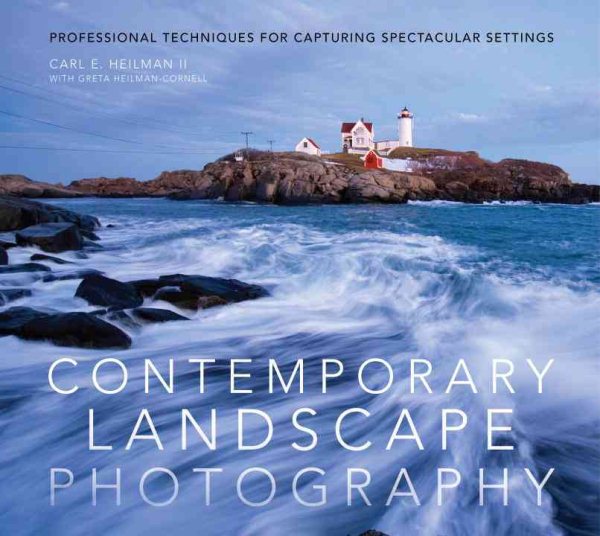
Learn the newest techniques from a master landscape photographer. Ready to bring your outdoor photography into the 21st century? Acclaimed photographer and outdoorsman Carl Heilman II has been photographing the American landscape for more than thirty years, and in this comprehensive guide to landscape photography, he shares the newest techniques for capturing professional-quality images in the field.
Request Contemporary Landscape Photography from the catalog.
Tuesday, September 21, 2010
50 Modern Artists You Should Know
A century and a half of masterpieces is covered in this chronologically arranged volume that beautifully captures the development of art in a new age.
Starting with James Abbott McNeill Whistler and ending with Matthew Barney, nearly every prominent figure in Modern art is represented in vibrant double-page spreads that show how these artists continued to redefine norms and challenge tradition. Fascinating biographical and anecdotal information about each artist is provided alongside large reproductions of their most celebrated works, stunning details, and images of the artists themselves. A color-coded time line spans the entire volume, showing overlapping careers and important historical dates. From the impressionists to the surrealists, the cubists to the pop-artists—readers will find a wealth of information as well as hours of enjoyment learning about this popular and prolific period in art history.
Request 50 Modern Artists You Should Know from the catalog.
Friday, September 10, 2010
Alfred Stieglitz New York
Iconic images of the city from one of the masters of photography collected for the first time in a charming homage to lost New York. Here is "The City of Ambition"—the New York that inspires dreams, the Gotham of the early twentieth century, when grand skyscrapers sprouted everywhere amid columns of steam. Alfred Stieglitz—the legendary art impresario and husband of Georgia O’Keeffe—forged a paean to his native city, finding inspiration on the streets, from the harbor ferry, and in the high-rise views. In her essay, respected art historian Bonnie Yochelson places Stieglitz’s work within the context of the burgeoning commercial world around him and other artists of the period. Stieglitz witnessed a key period in New York’s history when the city suddenly transformed into a modern metropolis. As a child, he grew up in an upper Fifth Avenue brownstone still surrounded by empty lots and dirt roads. Naturally, he was fascinated by the monumental buildings rising around him, and you can sense his wonder in these images. Among the classic buildings he so artfully captured here are the (now demolished) Madison Square Gardens, the Flatiron, Rockefeller Center, the Waldorf Astoria, the Chrysler, and the Empire State. His images formed archetypes that would go on to shape the imagination of generations. This intimate volume makes for a beautiful souvenir of timeless New York, a city of striving and dreaming.
Request Alfred Stieglitz : New York from the catalog.
Request Alfred Stieglitz : New York from the catalog.
Friday, September 3, 2010
Threshold
Poems By Jennifer Richter
Jennifer Richter presents a series of poems that explore the many facets of the term "threshold." Throughout the collection, the narrator experiences several acts of threshing, or separating—from birth and the small yet profound distances that part a mother and child, to the separation caused by illness and its toll on relationships. At the same time, she is progressively gathering, piecing together the remnants of her life, collecting her children into her arms, and welcoming a future without pain. Pain is often present in these poems, as the narrator frequently confronts her own threshold for enduring a ravaging illness. Her harrowing struggle through recovery is chronicled by a poem at the end of each section, tracing her powerful journey from deep suffering to a fragile yet steadfast sense of hope.
These gripping lyric and prose poems explore duality in its many forms: the private, contemplative world versus a world of action; the mirror sides of health and sickness; the warmth of a June sun and the deep, long nights of winter; mother and child; collecting and letting go. From the comfort of a morning bed at home to the desperate streets of Hanoi, Threshold is a searing portrait of healing, the courage it takes to bridge the gulfs that divide, and the wonder of the ties that bind.
Check Catalog
Jennifer Richter presents a series of poems that explore the many facets of the term "threshold." Throughout the collection, the narrator experiences several acts of threshing, or separating—from birth and the small yet profound distances that part a mother and child, to the separation caused by illness and its toll on relationships. At the same time, she is progressively gathering, piecing together the remnants of her life, collecting her children into her arms, and welcoming a future without pain. Pain is often present in these poems, as the narrator frequently confronts her own threshold for enduring a ravaging illness. Her harrowing struggle through recovery is chronicled by a poem at the end of each section, tracing her powerful journey from deep suffering to a fragile yet steadfast sense of hope.
These gripping lyric and prose poems explore duality in its many forms: the private, contemplative world versus a world of action; the mirror sides of health and sickness; the warmth of a June sun and the deep, long nights of winter; mother and child; collecting and letting go. From the comfort of a morning bed at home to the desperate streets of Hanoi, Threshold is a searing portrait of healing, the courage it takes to bridge the gulfs that divide, and the wonder of the ties that bind.
Check Catalog
It's Not You, It's Me: The Poetry of Breakup
Edited and introduced by Jerry Williams
With breakup and divorce rates so high in the United States, who wouldn't want to read an eclectic volume of poems on the subject? Therapeutic and transformative, edgy yet sincere, enlightening, wide-ranging, female and male, gay and straight, innocent and guilty, It's Not You, It's Me: The Poetry of Breakup incorporates work from as many different perspectives as possible in order to explore the exquisite pain of heartbreak. Such top-shelf contributors as National Book Award finalist Kim Addonizio, bestselling author Denis Johnson, former poet laureate Mark Strand, Edward Hirsch, Maxine Kumin, David Lehman, and many others proudly offer up their wisdom on the various pains (and humors) of heartbreak. In this stunning collection, readers will not find false hope, but the real hope of genuine sympathy in love, hate, fury, and recuperation.
Check Catalog
With breakup and divorce rates so high in the United States, who wouldn't want to read an eclectic volume of poems on the subject? Therapeutic and transformative, edgy yet sincere, enlightening, wide-ranging, female and male, gay and straight, innocent and guilty, It's Not You, It's Me: The Poetry of Breakup incorporates work from as many different perspectives as possible in order to explore the exquisite pain of heartbreak. Such top-shelf contributors as National Book Award finalist Kim Addonizio, bestselling author Denis Johnson, former poet laureate Mark Strand, Edward Hirsch, Maxine Kumin, David Lehman, and many others proudly offer up their wisdom on the various pains (and humors) of heartbreak. In this stunning collection, readers will not find false hope, but the real hope of genuine sympathy in love, hate, fury, and recuperation.
Check Catalog
The Wind Blows Through the Doors of My Heart: Poems
By Deborah Digges
"Some things I say are prayers and others/ poems. I tell you now that I don't know/ the difference." In this posthumous collection, Digges (Trapeze) visits subjects she's already touched on in her other volumes: love, family, youth and aging, and loss-especially loss. These explorations are not redundant but necessary. In poems both haunting and penetrating, she deals with the death of both her husband and her brother. She considers her own existence: "Who made me who I am," she states rather than asks at one point. Yet these poems are also full of memorable images and sly humor. Digges plays with the idea of dance in terms not only of syntax but of topics: dolphins, escaped as the result of a hurricane, are seen "dancing anyway until they find their wildness and forget." In one poem, the poet dances with seven veils; in another, she dances with Ralph Waldo Emerson-her first love, she says. In some, she even dances with the idea of her own demise. "I want the dark back, the bloody well of it,/ my face before the fire,/ or lie alone on the cold stone and find a way/ to sleep awhile, wake clear and wander." This book of poems is highly recommended for readers of contemporary poetry and especially those interested in women's studies.
Check Catalog
"Some things I say are prayers and others/ poems. I tell you now that I don't know/ the difference." In this posthumous collection, Digges (Trapeze) visits subjects she's already touched on in her other volumes: love, family, youth and aging, and loss-especially loss. These explorations are not redundant but necessary. In poems both haunting and penetrating, she deals with the death of both her husband and her brother. She considers her own existence: "Who made me who I am," she states rather than asks at one point. Yet these poems are also full of memorable images and sly humor. Digges plays with the idea of dance in terms not only of syntax but of topics: dolphins, escaped as the result of a hurricane, are seen "dancing anyway until they find their wildness and forget." In one poem, the poet dances with seven veils; in another, she dances with Ralph Waldo Emerson-her first love, she says. In some, she even dances with the idea of her own demise. "I want the dark back, the bloody well of it,/ my face before the fire,/ or lie alone on the cold stone and find a way/ to sleep awhile, wake clear and wander." This book of poems is highly recommended for readers of contemporary poetry and especially those interested in women's studies.
Check Catalog
Fiction Writing: The Essential Guide to Writing a Novel
By Richard Skinner
Drawing from his own experiences as a novelist and creative writing tutor, Richard Skinner takes you through the process of writing a novel—from ways of generating ideas and beginning the actual process of writing, through to producing a final draft. The book is a both a guide and an aid to writing a novel. The first part—the guide—offers solid practical suggestions for writers who are just getting started on a long piece of fiction. The second part of the book—the aid—operates more like a troubleshooting gallery for those who are well into a long piece of fiction. Eschewing formulas and prescriptions, Skinner encourages readers to think differently about issues as they arise by means of lateral thinking, oblique strategies, aphorisms, and quotations, and offers a range of ideas about the art of writing that stretches beyond the bounds of fiction.
Check Catalog
Drawing from his own experiences as a novelist and creative writing tutor, Richard Skinner takes you through the process of writing a novel—from ways of generating ideas and beginning the actual process of writing, through to producing a final draft. The book is a both a guide and an aid to writing a novel. The first part—the guide—offers solid practical suggestions for writers who are just getting started on a long piece of fiction. The second part of the book—the aid—operates more like a troubleshooting gallery for those who are well into a long piece of fiction. Eschewing formulas and prescriptions, Skinner encourages readers to think differently about issues as they arise by means of lateral thinking, oblique strategies, aphorisms, and quotations, and offers a range of ideas about the art of writing that stretches beyond the bounds of fiction.
Check Catalog
Monday, August 30, 2010
Best European Fiction 2010
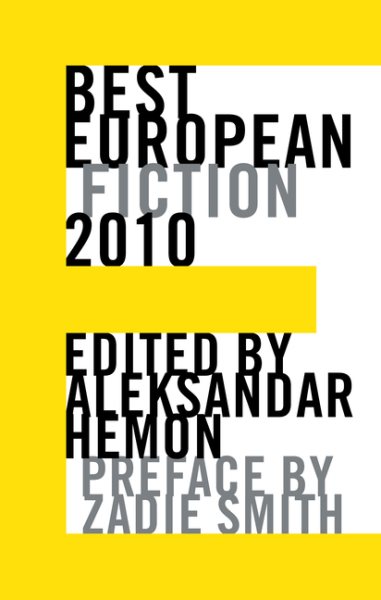 Edited by Aleksandar Hemon with a Preface by Zadie Smith
Edited by Aleksandar Hemon with a Preface by Zadie SmithDalkey Archive Press inaugurates a planned series of annual anthologies of European fiction with this impressive first volume, which gathers short stories from 30 countries. Readers for whom the expression "foreign literature" means the work of Canada's Alice Munro stand to have their eyes opened wide and their reading exposure exploded as they encounter works from places such as Croatia, Bulgaria, and Macedonia (and, yes, from more familiar terrain, such as Spain, the UK, and Russia). Even tiny Liechtenstein is represented, by a correlatively tiny but pungent story, "In the Snow," about two teenage boys hiking to another town that promises great entertainment. The stories are arranged alphabetically by home country. The first, then, is from Albania, a piece called "The Country Where No One Ever Dies," a beautifully composed and marvelously entertaining expression of Albanian cultural eccentricities. Certainly not all stories are conventional in construction or easy to decipher, but every piece benefits serious fiction lovers' reading experience. The book contains an insightful preface by novelist Zadie Smith, who overviews the included stories' commonalities and differences, as well as an introduction by Bosnian writer and volume editorHemon, author of the highly acclaimed novel The Lazarus Project (2008) and now a Chicago resident, who eloquently insists that the short story is hardly a moribund literary form.
Check Catalog
Saturday, August 28, 2010
You Couldn't Ignore Me If You Tried: The Brat Pack, John Hughes, and Their Impact on a Generation
By Susannah Gora
Concentrating on the making of such seminal films as Sixteen Candles, The Breakfast Club, St. Elmo's Fire, Pretty in Pink, Some Kind of Wonderful, Say Anything, Home Alone, and, of course, Ferris Bueller's Day Off, Gora's celebration of writer-director John Hughes (1950–2009) tends to be exhaustive and often exhausts. Gora cites the New York Times' A. O. Scott on Hughes he "was our Godard", and Roger Ebert's characterization of him as "the philosopher of adolescence" to orient her essay exploring what she calls cine-sociology, "the concrete sociological impact that movies can have on our lives." She discusses the origin of the sobriquet Brat Pack, offers biographical portraits of Hughes and many of the actors most associated with his movies, discusses the music of the so-called Brat Pack films (it was a crucial factor in their success), and considers how the Brat Pack films changed a generation. Although probably too self-important for its own good, this is still a must for Hughes admirers and students of American pop culture. Check Catalog
Concentrating on the making of such seminal films as Sixteen Candles, The Breakfast Club, St. Elmo's Fire, Pretty in Pink, Some Kind of Wonderful, Say Anything, Home Alone, and, of course, Ferris Bueller's Day Off, Gora's celebration of writer-director John Hughes (1950–2009) tends to be exhaustive and often exhausts. Gora cites the New York Times' A. O. Scott on Hughes he "was our Godard", and Roger Ebert's characterization of him as "the philosopher of adolescence" to orient her essay exploring what she calls cine-sociology, "the concrete sociological impact that movies can have on our lives." She discusses the origin of the sobriquet Brat Pack, offers biographical portraits of Hughes and many of the actors most associated with his movies, discusses the music of the so-called Brat Pack films (it was a crucial factor in their success), and considers how the Brat Pack films changed a generation. Although probably too self-important for its own good, this is still a must for Hughes admirers and students of American pop culture. Check Catalog
How to Read Music
By Helen Cooper
Even if you have never read a note of music before, this book will teach you how--easily and quickly. If you could once read music but have forgotten how, this book will quickly refresh your memory. Reading music will come easy to you once again. Contains every term and sign you are likely to come across when studying music.
Wednesday, August 25, 2010
Fortune's Fool: Edgar Bronfman, Jr., Warner Music, and an Industry in Crisis
By Fred Goodman
The compellingly told story of the Seagram heir's music-business adventures at Universal and Warner Music, and what went terribly wrong.Music journalist Goodman (The Mansion on the Hill: Dylan, Young, Geffen, and Springsteen and the Head-on Collision of Rock and Commerce, 1997) takes a deep look at a chaotic couple of decades in the embattled industry, in which Edgar Bronfman Jr. played a central role. Scion of an iron-fisted Canadian distilling clan who dominated the global liquor business, and Bronfman, enamored of show business from youth, tinkered in movie production and songwriting before setting his sights on an executive role in entertainment. In 1995, Seagram acquired 80 percent of MCA from Japanese electronics firm Matsushita. The music division was renamed Universal Music Group and became the biggest label unit in the world with the 1998 acquisition of PolyGram. But Bronfman's ambitions were mocked after the 2000 purchase of Seagram by Vivendi led to near-bankruptcy, thanks to profligate spending by the French firm's chairman Jean-Marie Messier. Bronfman next took control of Warner Music Group, once the U.S. market leader, in a 2004 purchase engineered with private-equity money. Rocked by mismanagement during the '90s, Warner's fortunes continued to sink in the new millennium, as online piracy exploded, CD sales plummeted and the Internet and mobile bonanzas envisioned by Bronfman never materialized. Goodman tells the story briskly, with total command of both the financial and aesthetic elements of his tale. Especially engrossing is his account of Warner's catastrophic decline under corporate hatchet men Robert Morgado and Michael Fuchs. The executives who played key roles in the latter-day fortunes of Universal and Warner: canny vet Doug Morris, rap-savvy combatants Jimmy Iovine and Lyor Cohen, are all sharply delineated. Bronfman, who has often been raked in the press as a dilettante who grievously mishandled his music assets, receives sympathetic treatment, somewhat belying the book's tart title, and makes a good case for himself in interviews with the author.Deftly balanced and well-sourced, one of the most solid music-biz bios in recent memory.
Check Catalog
The compellingly told story of the Seagram heir's music-business adventures at Universal and Warner Music, and what went terribly wrong.Music journalist Goodman (The Mansion on the Hill: Dylan, Young, Geffen, and Springsteen and the Head-on Collision of Rock and Commerce, 1997) takes a deep look at a chaotic couple of decades in the embattled industry, in which Edgar Bronfman Jr. played a central role. Scion of an iron-fisted Canadian distilling clan who dominated the global liquor business, and Bronfman, enamored of show business from youth, tinkered in movie production and songwriting before setting his sights on an executive role in entertainment. In 1995, Seagram acquired 80 percent of MCA from Japanese electronics firm Matsushita. The music division was renamed Universal Music Group and became the biggest label unit in the world with the 1998 acquisition of PolyGram. But Bronfman's ambitions were mocked after the 2000 purchase of Seagram by Vivendi led to near-bankruptcy, thanks to profligate spending by the French firm's chairman Jean-Marie Messier. Bronfman next took control of Warner Music Group, once the U.S. market leader, in a 2004 purchase engineered with private-equity money. Rocked by mismanagement during the '90s, Warner's fortunes continued to sink in the new millennium, as online piracy exploded, CD sales plummeted and the Internet and mobile bonanzas envisioned by Bronfman never materialized. Goodman tells the story briskly, with total command of both the financial and aesthetic elements of his tale. Especially engrossing is his account of Warner's catastrophic decline under corporate hatchet men Robert Morgado and Michael Fuchs. The executives who played key roles in the latter-day fortunes of Universal and Warner: canny vet Doug Morris, rap-savvy combatants Jimmy Iovine and Lyor Cohen, are all sharply delineated. Bronfman, who has often been raked in the press as a dilettante who grievously mishandled his music assets, receives sympathetic treatment, somewhat belying the book's tart title, and makes a good case for himself in interviews with the author.Deftly balanced and well-sourced, one of the most solid music-biz bios in recent memory.
Check Catalog
Bridges: The Science and Art of the World's Most Inspiring Structures
By David Blockley
Bridges vault valleys and leap rivers, but how? British civil-engineering professor Blockley answers in this "attempt to help nontechnical readers understand the technical issues bridge builders have to face." Emanating from the engineer's abiding anxiety to ensure against structural failure, such issues are successfully clarified in the author's engaging presentation. Essentially, the bridge engineer calculates the physical forces acting on the materials and shapes used to construct a bridge, but, as Blockley iterates throughout, engineering knowledge about how a bridge will perform has finite or indeterminable dimensions. The bridge collapses he describes were typically caused by some previously unrecognized behavior, and the collection of behaviors learned through bridge-building experience infuses Blockley's arrangement of bridges into four classifications—beams, arches, trusses, and suspensions. If we cross bridges unmindful of the forces they tame, Blockley's text, sketches, simple equations, and photographs instill appreciation for a physical dynamism that the engineer aspires to control. Also discussing the architectural beauty of bridges, this is a model explanation of technological design for a general audience.
Check Catalog
Bridges vault valleys and leap rivers, but how? British civil-engineering professor Blockley answers in this "attempt to help nontechnical readers understand the technical issues bridge builders have to face." Emanating from the engineer's abiding anxiety to ensure against structural failure, such issues are successfully clarified in the author's engaging presentation. Essentially, the bridge engineer calculates the physical forces acting on the materials and shapes used to construct a bridge, but, as Blockley iterates throughout, engineering knowledge about how a bridge will perform has finite or indeterminable dimensions. The bridge collapses he describes were typically caused by some previously unrecognized behavior, and the collection of behaviors learned through bridge-building experience infuses Blockley's arrangement of bridges into four classifications—beams, arches, trusses, and suspensions. If we cross bridges unmindful of the forces they tame, Blockley's text, sketches, simple equations, and photographs instill appreciation for a physical dynamism that the engineer aspires to control. Also discussing the architectural beauty of bridges, this is a model explanation of technological design for a general audience.
Check Catalog
Langford's Basic Photography: The Guide for Serious Photographers
By Michael Langford, Anna Fox & Richard Sawdon Smith
Langford's Basic Photography is a seminal photography text. First published in 1965, it has informed the work and career of many of the world's leading photographers.
This ninth edition continues the tradition of its predecessors, reflecting the same comprehensive mix of scholarly and practical information while covering every aspect of photography from capture through to output. As well as an emphasis on explaining the `how to' of the medium, Langford's Basic Photography also includes in-depth coverage of the fundamental principles that govern the art, such as how light behaves, optics, and the sensor. This ensure that you come away not only with a good grasp of photographic technique, but also an in-depth knowledge of the fundamentals that will help you to better understand how great photographs are made.
The new edition has been fully updated to reflect dynamic changes in the industry, and new elements include an expansion and overhaul of the information on digital cameras and digital printing, a wider range of photography from around the world, and a fully edited and updated photography timeline.
Check Catalog
Langford's Basic Photography is a seminal photography text. First published in 1965, it has informed the work and career of many of the world's leading photographers.
This ninth edition continues the tradition of its predecessors, reflecting the same comprehensive mix of scholarly and practical information while covering every aspect of photography from capture through to output. As well as an emphasis on explaining the `how to' of the medium, Langford's Basic Photography also includes in-depth coverage of the fundamental principles that govern the art, such as how light behaves, optics, and the sensor. This ensure that you come away not only with a good grasp of photographic technique, but also an in-depth knowledge of the fundamentals that will help you to better understand how great photographs are made.
The new edition has been fully updated to reflect dynamic changes in the industry, and new elements include an expansion and overhaul of the information on digital cameras and digital printing, a wider range of photography from around the world, and a fully edited and updated photography timeline.
Check Catalog
The Real Wizard of Oz: The Life and Times of L. Frank Baum
By Rebecca Loncraine
This diligently researched, gracefully written biography provides a comprehensive account of Baum (1856-1919), who created what Loncraine (independent scholar) calls the US's modern fairy tale. Providing an exquisite portrait of the period from the mid-1800s to the second decade of the 20th century, the author describes how Baum's first Oz book, The Wonderful Wizard of Oz (1900), reflected his experience in New York State's Finger Lakes region, the Great Plains, and other parts of the Midwest. According to Loncraine, when Baum completed The Wonderful Wizard of Oz, he knew that he had done his best work. The book seemed more like a discovery than an invention, Loncraine observes, and because it took on a life of its own Baum found himself in the thrall of an audience that demanded more stories from Oz (he wrote 13 sequels). Loncraine does not stint in her evocation of Baum's later years, when he tried to replicate the success of his book in Hollywood films, all of which flopped. A concluding chapter describes the period between Baum's death and the appearance in 1939 of the Technicolor transformation that turned The Wizard of Oz into a national epic.
Check Catalog
This diligently researched, gracefully written biography provides a comprehensive account of Baum (1856-1919), who created what Loncraine (independent scholar) calls the US's modern fairy tale. Providing an exquisite portrait of the period from the mid-1800s to the second decade of the 20th century, the author describes how Baum's first Oz book, The Wonderful Wizard of Oz (1900), reflected his experience in New York State's Finger Lakes region, the Great Plains, and other parts of the Midwest. According to Loncraine, when Baum completed The Wonderful Wizard of Oz, he knew that he had done his best work. The book seemed more like a discovery than an invention, Loncraine observes, and because it took on a life of its own Baum found himself in the thrall of an audience that demanded more stories from Oz (he wrote 13 sequels). Loncraine does not stint in her evocation of Baum's later years, when he tried to replicate the success of his book in Hollywood films, all of which flopped. A concluding chapter describes the period between Baum's death and the appearance in 1939 of the Technicolor transformation that turned The Wizard of Oz into a national epic.
Check Catalog
Tuesday, August 24, 2010
Walker Evans: American Photographs
Walker Evans' American Photographs is arguably the most important photobook ever published. Originally conceived as a catalogue to accompany Evan's one-man show at The Museum of Modern Art in 1938, it has been out of print for many long stretches of time. Books on Books 2 presents the original 1938 edition with the 87 legendary black-and-white photographs that defined the documentary-style aesthetic. This volume also reproduces Lincoln Kirstein's great original essay as well as a contemporary piece by John T. Hill, the author of many books on Evans, including Lyric Documentary, published in 2006. (DAP)
Request American Photographs from the catalog.
Wednesday, August 18, 2010
Portraits
By Jean-Paul Sartre (Translated by Chris Turner)
Six years before his death in 1980, Sartre opined to Simone Beauvoir that of all his writings, Situations (1947-76) would most likely survive the test of time. The ten-volume work contained "articles related to my philosophy, but written in a very simple style and speaking of things that everybody knows." Unfortunately, few today know what Sartre considered commonplace, and no complete English translation exists of the multivolume work he saw as his most enduring. Turner is doing a remarkable job of remedying that situation. Having just translated Situations III (The Aftermath of War, 2008), he now gives Anglophone readers Situations IV in its entirety, as originally published in 1964. This new translation (Benita Eisler's dates from 1965) is must reading for anyone interested in the artistic and intellectual history of 20th-century France. It embraces an extraordinary range of essays: Sartre's caustic "Reply to Albert Camus," which sealed the two philosophers' famous breakup; homages to Camus, Andre Gide, Paul Nizan, and Maurice Merleau-Ponty; studies of Tintoretto, Alberto Giacometti, and Andre Masson; and personal recollections of favorite Italian cities. These fascinating, timeless meditations resurrect the great minds of a bygone era. Art, philosophy, literature, and travel blend to form a work of immense interest.
Check Catalog
Six years before his death in 1980, Sartre opined to Simone Beauvoir that of all his writings, Situations (1947-76) would most likely survive the test of time. The ten-volume work contained "articles related to my philosophy, but written in a very simple style and speaking of things that everybody knows." Unfortunately, few today know what Sartre considered commonplace, and no complete English translation exists of the multivolume work he saw as his most enduring. Turner is doing a remarkable job of remedying that situation. Having just translated Situations III (The Aftermath of War, 2008), he now gives Anglophone readers Situations IV in its entirety, as originally published in 1964. This new translation (Benita Eisler's dates from 1965) is must reading for anyone interested in the artistic and intellectual history of 20th-century France. It embraces an extraordinary range of essays: Sartre's caustic "Reply to Albert Camus," which sealed the two philosophers' famous breakup; homages to Camus, Andre Gide, Paul Nizan, and Maurice Merleau-Ponty; studies of Tintoretto, Alberto Giacometti, and Andre Masson; and personal recollections of favorite Italian cities. These fascinating, timeless meditations resurrect the great minds of a bygone era. Art, philosophy, literature, and travel blend to form a work of immense interest.
Check Catalog
Subscribe to:
Posts (Atom)

